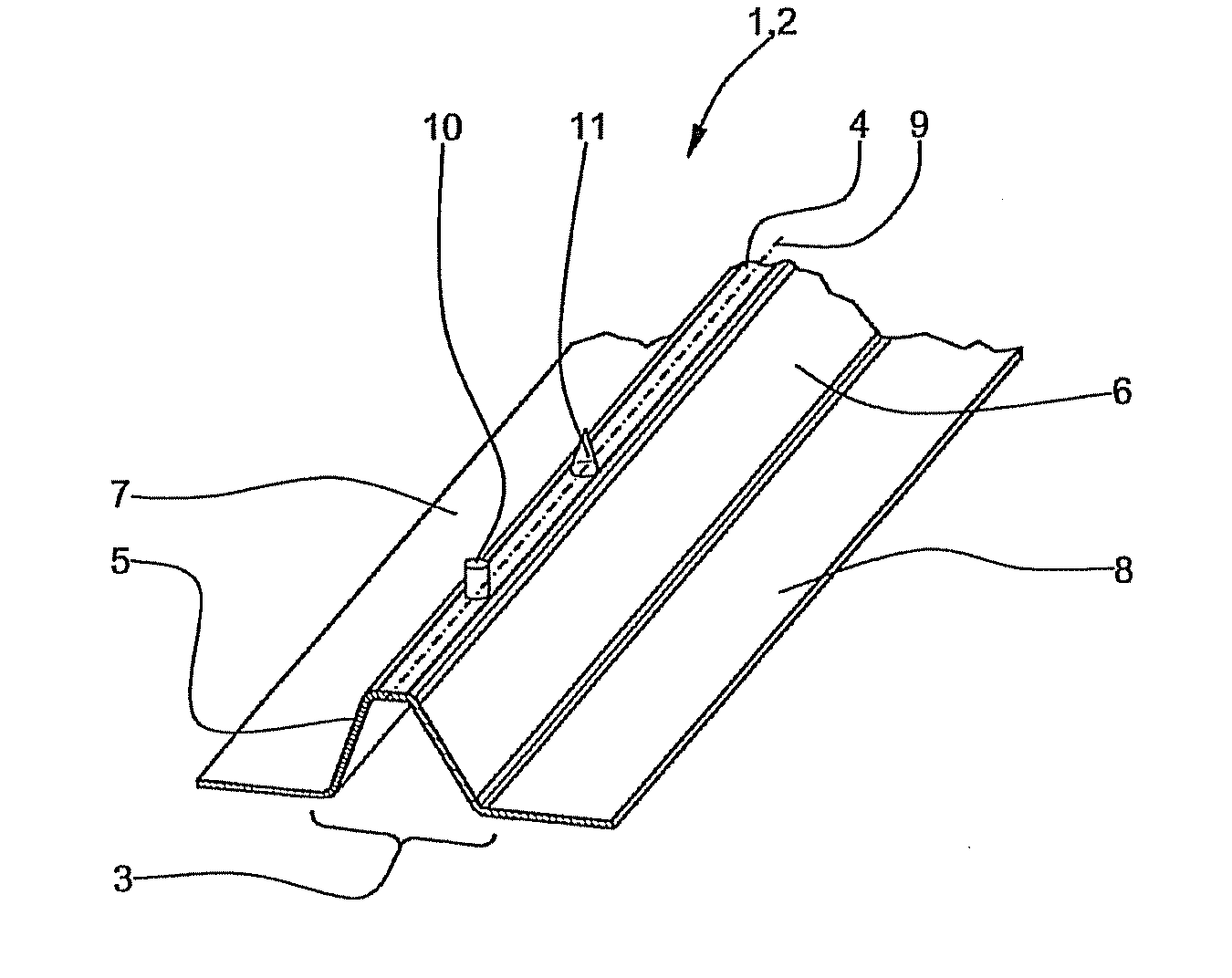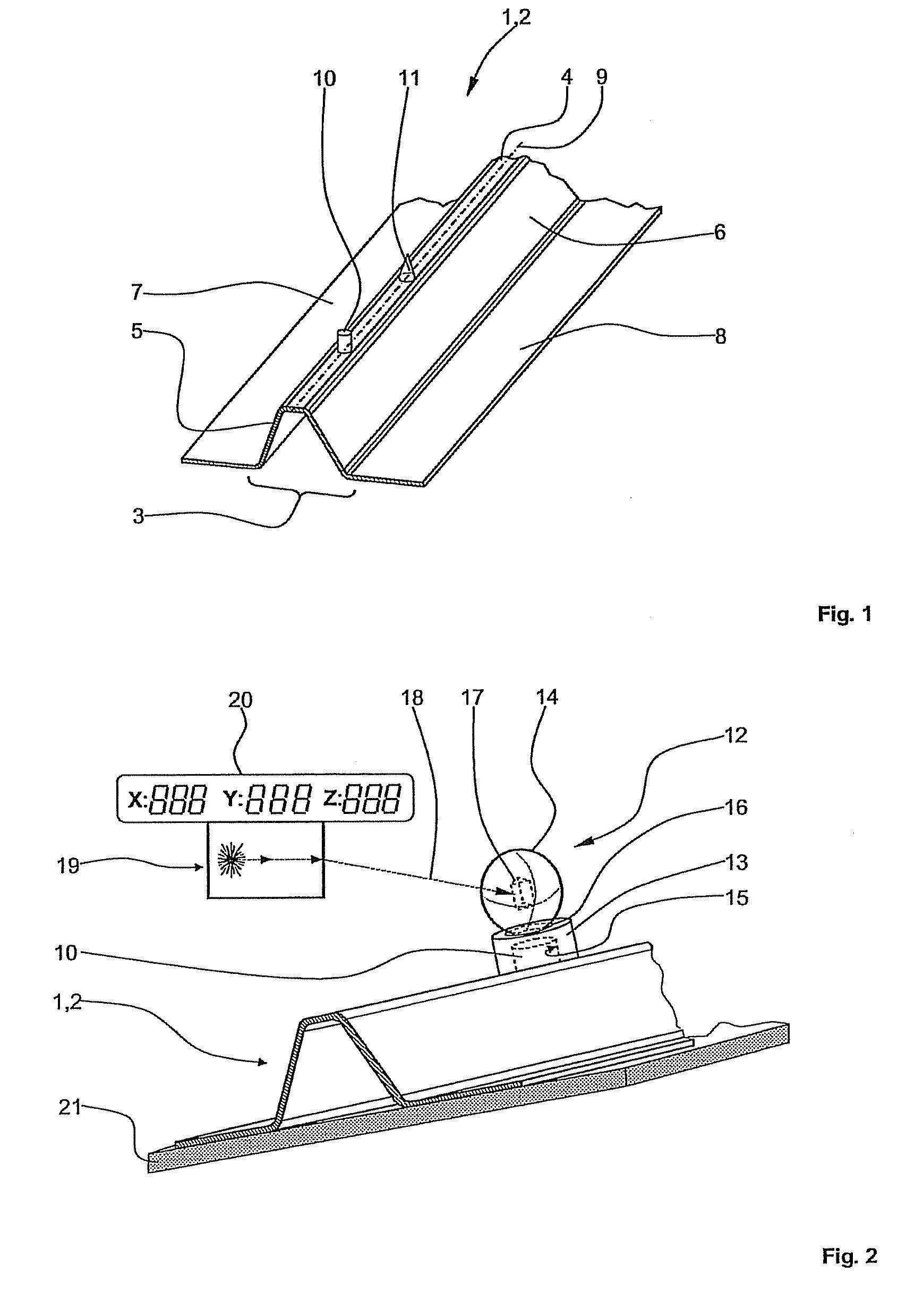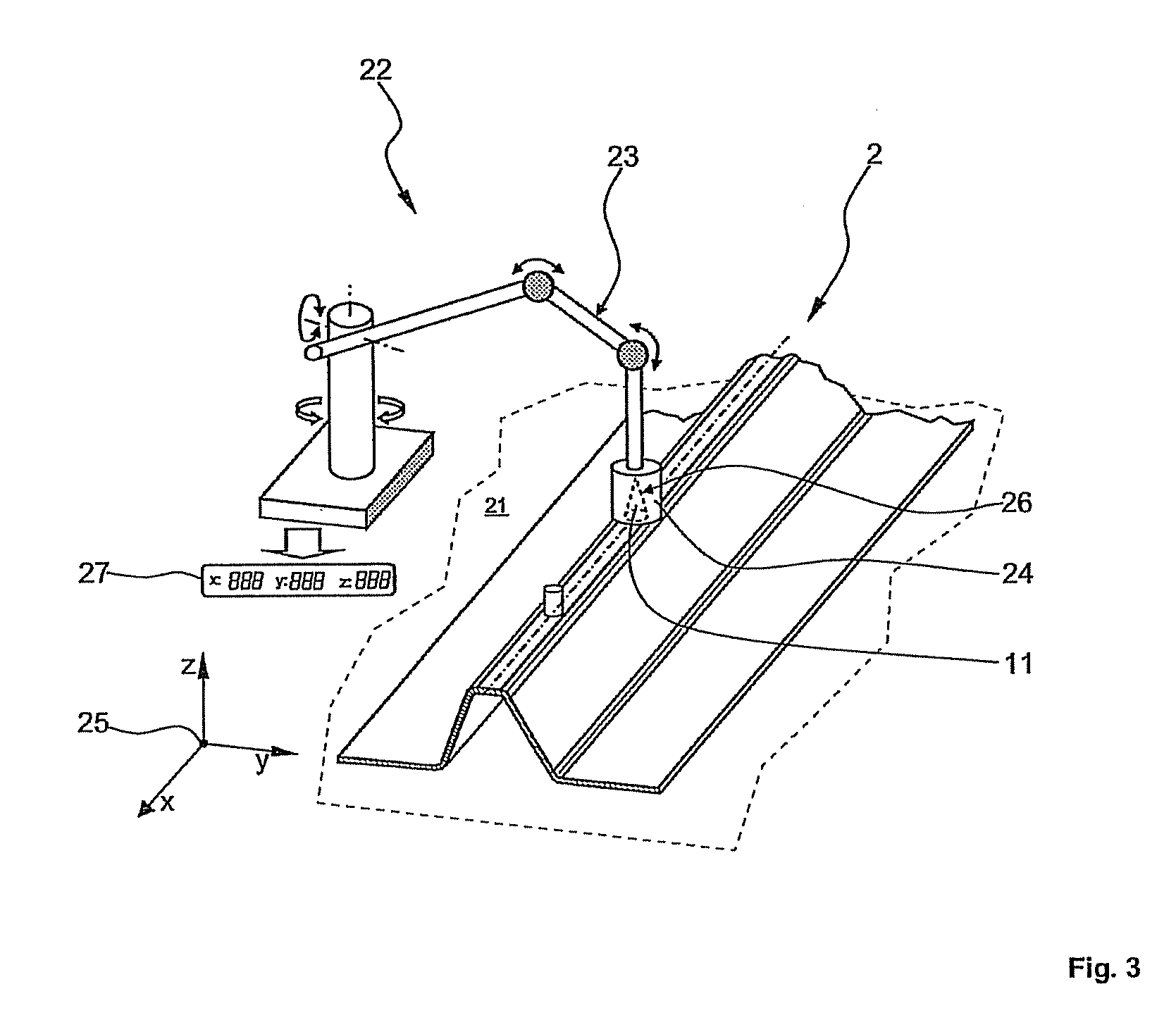Structural element for a fuselage cell structure of an aircraft, comprising at least one positioning aid
a technology of structural elements and aircraft, applied in the direction of distance measurement, height/levelling measurement, instruments, etc., can solve the problems of dimensional deviation, inability to reproduce, and considerable labour cost in so as to facilitate the measurement of a complete section and simplify the production of shell components
- Summary
- Abstract
- Description
- Claims
- Application Information
AI Technical Summary
Benefits of technology
Problems solved by technology
Method used
Image
Examples
Embodiment Construction
[0027]In the drawings, like constructional elements have the same reference numeral in each case.
[0028]FIG. 1 shows a so-called Ω-stringer profile 2 as an embodiment of a structural element 1 according to the invention. The stringer profile 2 has a central portion 3 which has an approximately trapezoidal cross-sectional geometry. The central portion 3 has a horizontal top face 4, which is connected on each side to an inclined side face 5, 6. The side faces 5, 6 each finally transition into a horizontally extending flange 7, 8. Two positioning aids 10, 11, each having a different geometrical shape, are arranged one behind the other and offset from one another in the region of a central line 9 of the stringer profile 2.
[0029]The stringer profile 2 may for example, be produced by means of the RTM process using a carbon-fibre-reinforced epoxy resin. In contrast to the rest of the stringer profile 2, the positioning aids 10, 11 are not fibre-reinforced but preferably consist exclusively ...
PUM
 Login to View More
Login to View More Abstract
Description
Claims
Application Information
 Login to View More
Login to View More - R&D
- Intellectual Property
- Life Sciences
- Materials
- Tech Scout
- Unparalleled Data Quality
- Higher Quality Content
- 60% Fewer Hallucinations
Browse by: Latest US Patents, China's latest patents, Technical Efficacy Thesaurus, Application Domain, Technology Topic, Popular Technical Reports.
© 2025 PatSnap. All rights reserved.Legal|Privacy policy|Modern Slavery Act Transparency Statement|Sitemap|About US| Contact US: help@patsnap.com



